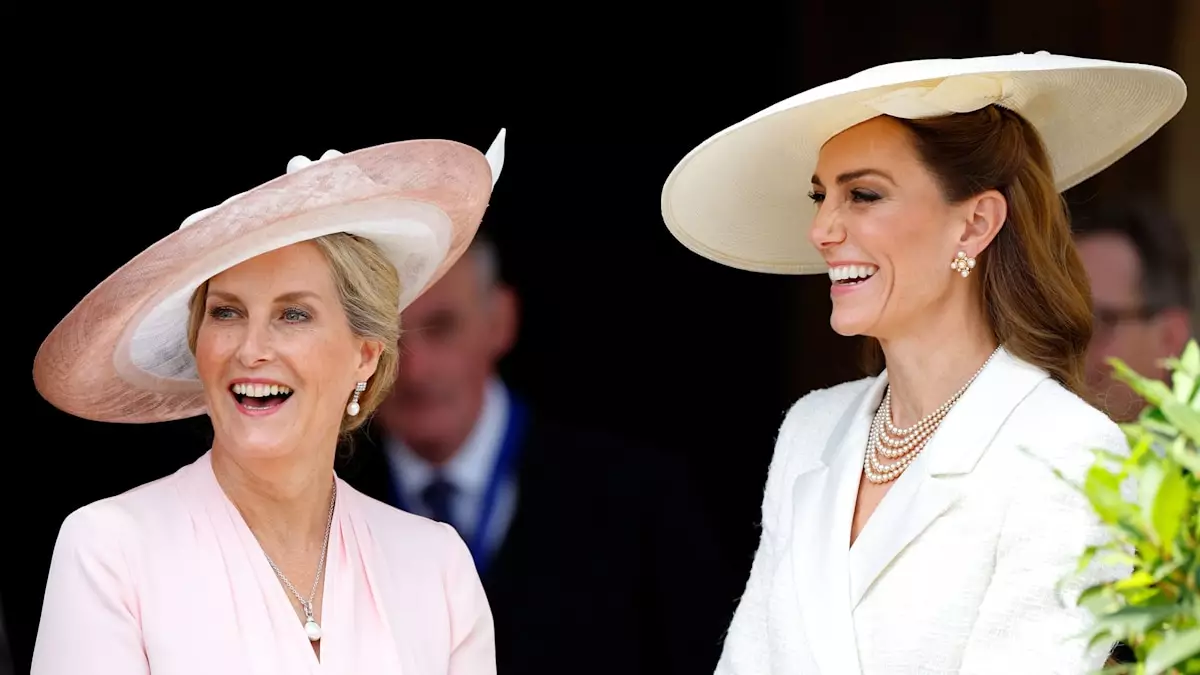In a modern monarchy where traditional roles are continuously evolving, the bond between the Princess of Wales, Catherine, and the Duchess of Edinburgh, Sophie, shines brightly. Their recent appearance at Garter Day was nothing short of mesmerizing, as the two royal women shared moments of laughter and camaraderie from their vantage point at St. George’s Chapel in Windsor. This public display of affection is more than just a snapshot of a day; it is representative of a deep, underlying sisterhood that transcends royal duties and expectations.
The Psychological Significance of Their Connection
Dr. Arthur Cassidy, a noted Royal Commentator and Celebrity Psychologist, offers a unique lens through which to view their relationship. He describes their bond as “uniquely significant,” emphasizing the importance of a close confidant in one’s life. For both Kate and Sophie, this relationship is not merely personal; it is a dynamic created by shared experiences as young women navigating the complexities of royal life. They face the demands of public scrutiny while also striving to fulfill their duties as mothers and wives. Such a sister-like bond provides an invaluable source of emotional support, allowing each of them to thrive in their respective roles.
The concept of having a trusted confidante within any high-pressure environment is paramount, and in the context of royal life, it becomes even more crucial. Dr. Cassidy points out that every individual, especially those in the limelight, requires someone who truly understands them. This duality of personal and professional sharing seems to flourish within their relationship, acting as both a buffer against the stresses of royal commitments and a catalyst for personal growth.
The Impact of Shared Experiences
The women’s shared journey as new members of the royal family forms the crux of their sisterhood. Both Kate and Sophie married into established traditions; while Kate wed Prince William in 2011, Sophie became connected with Prince Edward in 1999. These intertwining timelines and shared challenges create a tapestry of experiences that bind them together. The emotional support they offer one another not only enhances their royal engagements but also reinforces their individual identities within the monarchy.
Additionally, as Kate navigates her health challenges, the importance of this supportive relationship becomes even more critical. Dr. Cassidy highlights that balancing her recovery with family life is essential, showcasing the need for both psychological and emotional well-being in such arduous times. It is here that the role of Sophie evolves; she stands as a pillar of stability, guiding Kate through the complexities of duty versus personal life. The mutual respect and understanding they have cultivated allow for an environment that supports mental health and well-being.
A Glimpse into Royal Dynamics
Regrettably, a few days after participating in ceremonies like Trooping the Colour and Garter Day, Kate had to withdraw from attending Royal Ascot due to her ongoing recovery journey. This instance accentuates a growing awareness within the royal family about the importance of physical and mental health. The emphasis on self-care over public appearances marks a significant shift in royal protocols, possibly influenced by the nurturing dynamics seen between Kate and Sophie.
Dr. Cassidy underscores the need for discretion, understanding, and heightened sensitivity when supporting loved ones, especially in times of distress. The familial relationship between Kate and Sophie radiates reliability and support, essential for crafting a balanced lifestyle. This represents a broader message not just for royal followers, but for society at large—mental wellness should be a priority, even for those with exhilarating public personas.
The Future of Royal Engagements
As both women continue to redefine their roles, all eyes remain on how they can shape the royal landscape in the years ahead. With expectations rising for the Duke and Duchess of Edinburgh to assume more responsibilities as Prince William eventually ascends the throne, the groundwork they are laying now will undoubtedly pay dividends in their future roles as leaders within the monarchy.
Together, Kate and Sophie are proving that sisterhood can indeed withstand the trials of royal life. Their relationship not only enhances their personal and professional lives but also lays a foundation for a progressive approach to modern monarchy—a model built on empathy, strength, and unwavering support. The royal family is, after all, as much about personal connections as it is about public duties.

